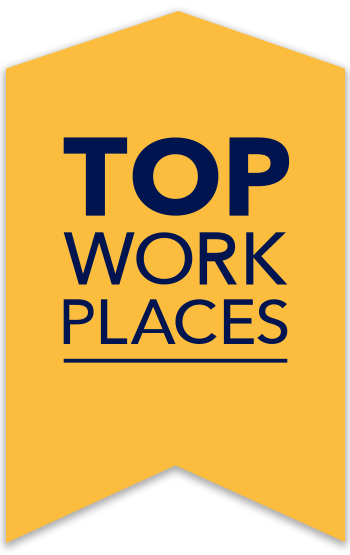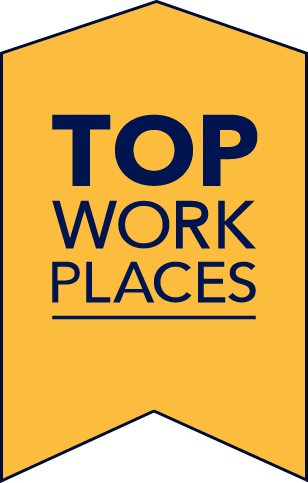Today’s modern organizations know that work-life flexibility is essential for a healthy, thriving, productive culture. Some may refer to it as “flexible work arrangements” or “work-life balance.”
While the terms are often used synonymously, they don’t always mean the same thing in the eyes of company leaders. They often shudder when promoting work-life balance because it can feel like it encourages less work and more play. Work-life flexibility is not about finding balance. Instead, workplace flexibility means creating a culture where employees meet the demands of their personal lives while maintaining high levels of work performance. Flexible work arrangements include options for when, where – and how – the work gets done.
In the early days of the pandemic, many companies had to challenge convention and adopt new work practices to help employees through difficult times. Now, the value of workplace flexibility has increased for employees and job-seekers looking for a work environment that prioritizes it. Undoubtedly, workplace flexibility will continue to play an important role in organizations looking to attract talented employees in an ever-evolving work environment.
Workplace Flexibility for Employees
During the interview process, a great question to ask potential candidates is: What is workplace flexibility, and what does it mean for you? A flexible mindset is a sought-after quality among employers, and it can prove valuable for the employee as well.
When employees adopt a flexible mindset, they tend to experience lower stress levels and better overall well-being. It also enables employees to learn new skills in a changing environment, ultimately benefiting their career path down the road.
Flexibility and adaptability in the workplace can take on a lot of different forms, depending on the environment and industry you work in, but here are a few general ways employees can demonstrate flexibility:
- Arrive to work early or staying later than regular working hours.
- Learn new software or skills to streamline or improve a process.
- Adapt to a changing role that requires additional tasks or responsibilities.
- Set daily tasks aside when needed to address emerging emergencies.
- Cover extra shifts or work when a co-worker is on vacation or calls out sick.
- Train new employees or helping co-workers with tasks when needed.
- Offer solutions rather than complaints when problems arise.
- Stay up to date on industry trends.
Workplace Flexibility for Employers
Work-life flexibility has benefits that go beyond the scheduling needs of employees. It starts with encouraging managers to identify employee work styles and personal needs. Work-life flexibility requirements will differ significantly for people, and it is a good idea to create an inventory of what challenges need to be accommodated.
Managers play a vital role here, as they must adapt their communication and feedback methods to support employees through a host of challenges. Some workplace flexibility best practices to consider include:
- Understanding a team member’s motivation.
- Focusing on accomplishing goals rather than how the goals are achieved.
- Encouraging creativity and the sharing of ideas.
- Being transparent about objectives.
- Creating an environment where employees feel comfortable taking time off for things that matter to them.
- Providing gratitude or rewards to employees who need motivation or crave recognition.
An important note: Some companies fail to adopt a work-life flexibility mindset because they haven’t become comfortable trusting employees to perform and do their jobs.
Examples of flexible schedules
There are several ways you can help employees to achieve workplace flexibility while striving to achieve company goals, including:
- Flextime: Allowing employees to work on a schedule that best suits their needs.
- Part-time employment: Giving employees the option to go part-time in a good way (e.g., not as a punishment).
- Condensed schedules: Changing the expected work schedule in a way that gives the employee more focused personal time (e.g., a four-day workweek).
- Remote work: Creating a work environment where working from home is accepted and encouraged.
- Freelancing: Allowing employees to work on a contract/project basis of their choosing.
- Unlimited PTO: Encouraging employees to take the personal time they need without counting days.
- Alternative scheduling: Setting non-traditional work hours (e.g., not 8 to 5) such as starting earlier or later in the day to avoid the commute or meet school schedule demands.
- Telecommuting: Some employees may prefer to do their work outside the office. This flexible method establishes the same hours of work but from a remote location. Telecommuting can occur regularly or meet specific needs when weather, commitments, or other unforeseen circumstances arise.
- Job sharing: In this flexible approach, two employees share a job that would usually be considered a full-time position for one employee, thus creating two part-time positions.
- Permanent part-time arrangements: A part-time position where an employee doesn’t work a whole week but may work two or three full days per week.
Benefits of Workplace Flexibility
When done right, flexibility and adaptability in the workplace produce positive outcomes for the employees and broader company performance. The benefits include improved employee commitment, morale, retention, and satisfaction. To build more work-life flexibility, focus on what employees have accomplished rather than the schedule used to complete it.
Employee satisfaction and morale
Improved work/life balance contributes to employee satisfaction as well as higher morale. It improves employee engagement because individuals feel their needs matter to the organization. As a result, they are more productive at work – and more likely to refer your company to others too.
Employee retention
For employees looking for flexibility in the workplace, providing an adaptable approach can also foster a greater sense of loyalty to your organization, especially for those employees whose life circumstances may require a more flexible approach. Studies show higher engagement also leads to lower turnover. Similarly, the best companies for work-life balance benefit from higher levels of employee retention. This is especially important for talented employees who may be tempted to look for better opportunities elsewhere that consider their desire for a flexible work approach.
Employee work-life balance
Balance is one of the best benefits of flexibility in the workplace. Often, remote or hybrid employees are more satisfied with their work-life balance. Workplace flexibility allows individuals to have greater control over their schedules, enabling them to better balance their work and personal life. This flexibility can reduce the stress and time constraints associated with commuting, leading to improved overall well-being.
Increased recruitment pool
At its core, workplace flexibility is all about removing geographic barriers and letting individuals work flexible schedules. Those factors allow employers to attract a greater array of top talent. Not to mention, there a lot of remote job seekers in the current hiring market.
Improved productivity & results
Workplace flexibility enhances productivity by enabling employees to work during their most productive hours and reducing distractions. It also saves money by reducing the need for large office spaces, lowering overhead costs, and potentially increasing retention rates, which reduces recruitment and training expenses. That efficiency and extra revenue is great for your bottom line.
Challenges of workplace flexibility
Although flexibility in the workplace has many benefits, there can also be challenges. Issues like remote employee burnout and inefficient communication can also impact your bottom line. When offering workplace flexibility, keep an eye out for these common, costly challenges.
Lack of face-to-face communication
Workplace flexibility can impact face-to-face communication in several ways. In-person interactions decrease, and for some employees that can be difficult. While some individuals may find remote work more productive, others may find it hard to communicate without the body language and interpersonal connection that comes from a face-to-face conversation.
Learn more: Engage Remote Workers
Blurring work life and home life
Even though workplace flexibility has work-life balance benefits, some individuals find it hard to separate home life from work life. Often, remote employees have a hard time creating schedules, while results in longer hours and the risk of burnout.
Connecting with the bigger picture
Physical separation makes it hard for employees with flexible workplaces to connect their day-to-day activities to shared goals and company vision. Engaging remote employees with the company vision is essential to ensure they remain aligned with shared objectives. To do so, facilitate regular communication, sharing the company’s vision and goals, involving remote employees in important discussions, and recognizing their contributions. All of this can help create a sense of belonging and purpose within the organization, no matter what your work location or schedule look like.
Managing employees in a flexible workplace
In addition to checking up on employees’ progress and tasks, it’s essential to check in on your people. Micromanagement can erode employee autonomy and trust, which are key components of a successful flexible work environment. By checking in on employees, you show that you trust their abilities and are interested in their progress, fostering a collaborative and supportive atmosphere that boosts productivity and job satisfaction.
Understand What Matters to Your Team
Ultimately, there are many ways to build workplace flexibility into your culture. Companies with flexible work arrangements start by first reflecting on what’s possible, realistic, and what the company is willing to do. Regular, anonymous employee engagement surveys are a great way to gauge what your team thinks about their work environment, including work/life flexibility and if your current workplace flexibility benefits are working.
It is undeniable workplace flexibility is essential to employee engagement and retention. It’s also critical to building a thriving business structure. Energage research shows that Top Workplaces excel at building and maintaining a culture of work-life flexibility. On average, 85 percent of employees at Top Workplaces responded positively to the Workplace Survey statement, “I have the flexibility I need to balance my work and personal life.” Recently, Energage announced the winners of the Top Workplaces national award for Culture Excellence.
Find out what matters most to your employees. Nominate your company for Top Workplaces, the recognition program that’s powered entirely by employee feedback

 Stand out with an award-winning
Stand out with an award-winning